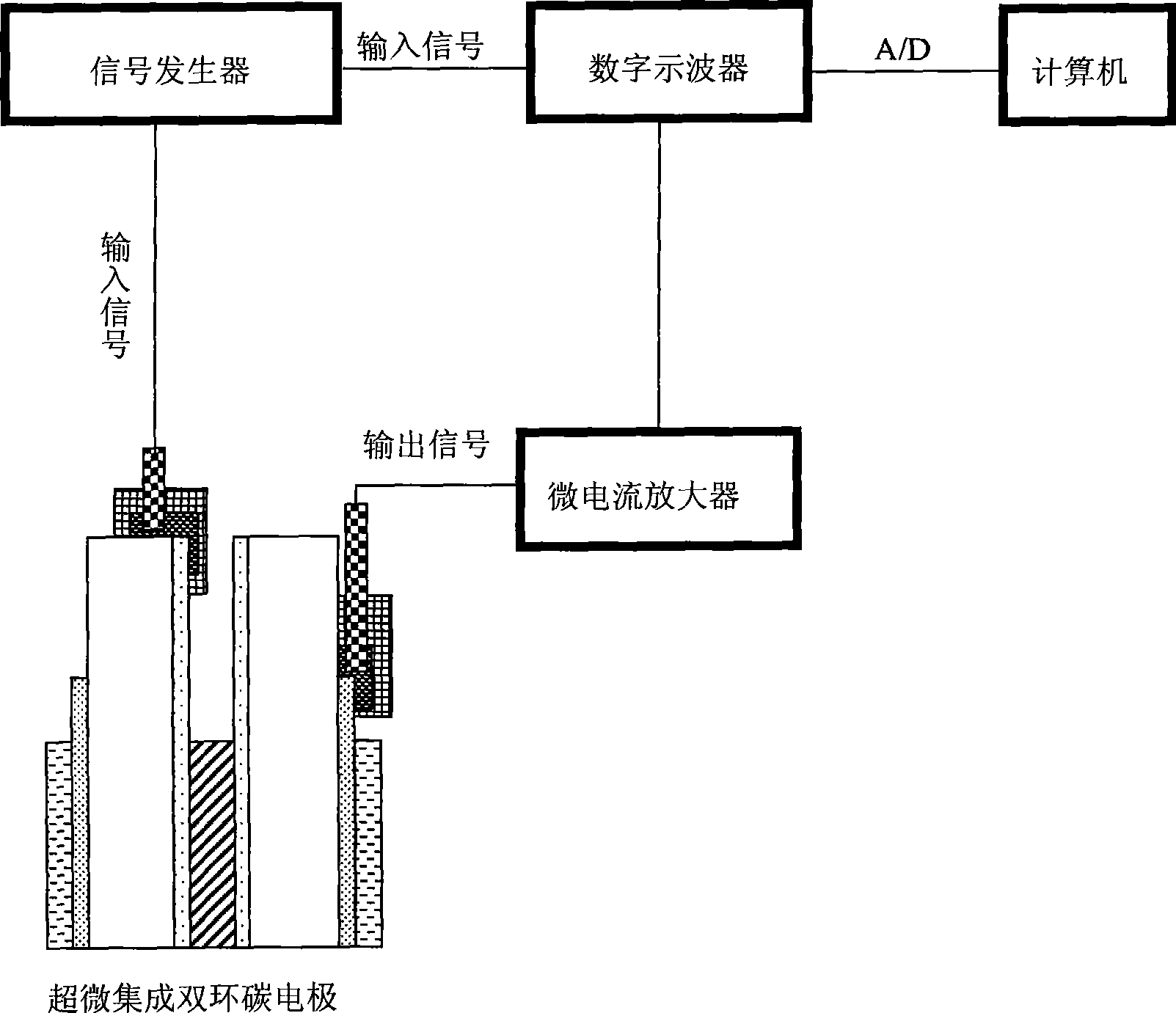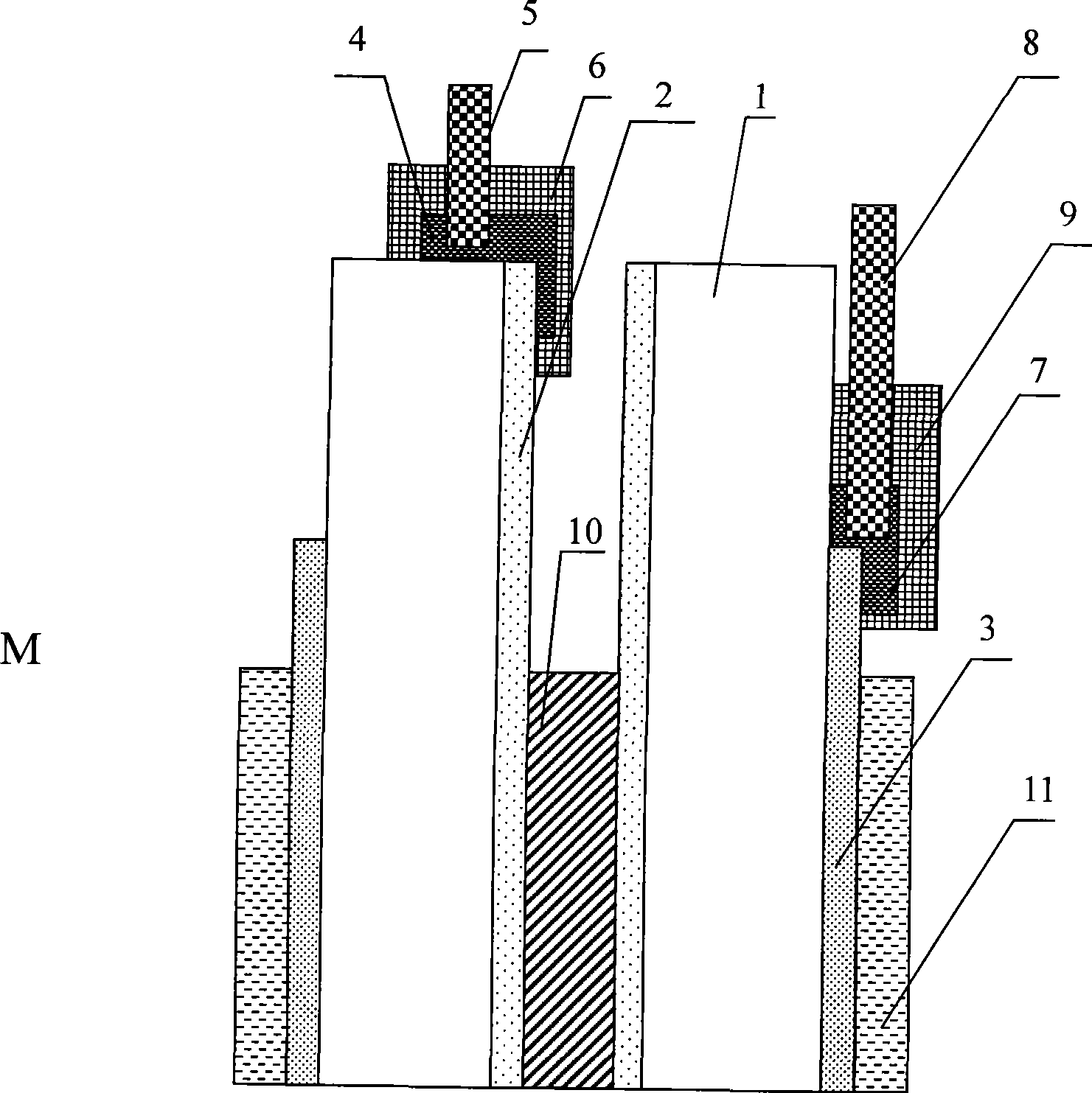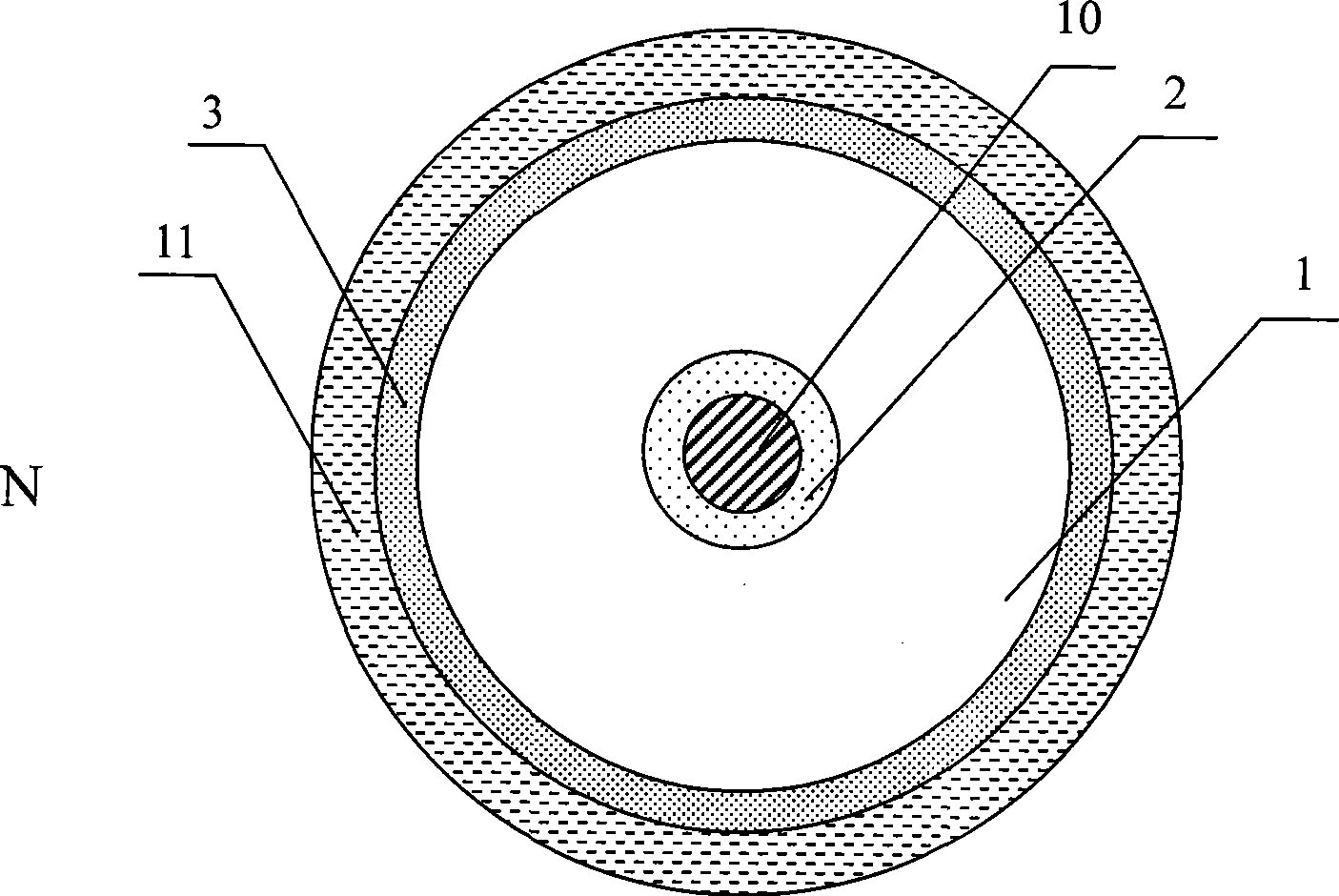Test method and system for researching DNA molecule conductivity
A DNA molecule and testing method technology, applied in the field of systems for studying the conductivity of DNA molecules, can solve the problems of inability to monitor the electron transfer process in real time, limited information, and inability to study the overall conductivity of DNA molecules, etc., so as to achieve real-time monitoring of the electron transfer process, Information-rich and diverse effects
- Summary
- Abstract
- Description
- Claims
- Application Information
AI Technical Summary
Problems solved by technology
Method used
Image
Examples
Embodiment
[0038] In this embodiment, a Tektronix AFG3021B arbitrary waveform generator, a Tektronix 2012B digital oscilloscope, a TJ-110 microcurrent amplifier, and a P4 computer are selected to build a research system, such as figure 1 As shown, a double-ring electrode with a conductive layer on the inner and outer layers is used. One conductive layer of the electrode is connected to the digital signal generator, and the other conductive layer is connected to the micro-current amplifier. The output of the amplifier and the other output of the digital signal generator are respectively connected to the digital oscilloscope. The analog signal collected by the digital oscilloscope at the input end of each channel is converted into a digital signal through the A / D converter, and connected to the computer through the RS-232 interface.
[0039] Its working principle is as follows: the arbitrary waveform generator generates an input signal, one way is directly sent to the first channel of the ...
PUM
| Property | Measurement | Unit |
|---|---|---|
| thickness | aaaaa | aaaaa |
Abstract
Description
Claims
Application Information
 Login to View More
Login to View More - Generate Ideas
- Intellectual Property
- Life Sciences
- Materials
- Tech Scout
- Unparalleled Data Quality
- Higher Quality Content
- 60% Fewer Hallucinations
Browse by: Latest US Patents, China's latest patents, Technical Efficacy Thesaurus, Application Domain, Technology Topic, Popular Technical Reports.
© 2025 PatSnap. All rights reserved.Legal|Privacy policy|Modern Slavery Act Transparency Statement|Sitemap|About US| Contact US: help@patsnap.com



